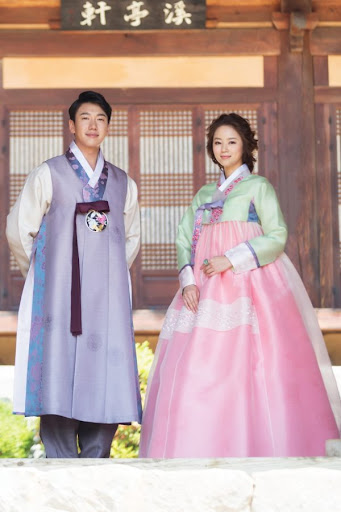The History of Traditional Clothing: South Korea and Japan

October 4, 2022
All around the world, beautiful traditional clothing has been worn for thousands of years. Clothing has changed and evolved so much over the course of history, having been adapted and been influenced by other cultures. Here’s a look at the history of traditional clothing in some of Asia’s most well known countries.
The South Korean Hanbok was created during the Three Kingdoms Period (57 B.C. – 668 A.D.). Hanbok is an umbrella term for the components that make up the outfit and it means “Korean clothes”. The hanbok, like any other type of clothing, has gone through many changes since it was created. The most commonly worn type of hanbok to this day is the kind worn during the mid-late Joseon Dynasty, with tight tops and loose bottoms.
The ancient hanbok was made up of a jeogori top, baji pants, a chima skirt, and a po which is like a coat. The hanbok was designed to make movement easier and integrated many motifs. The basic structure of hanboks remained basically the same to this day.
The name hanbok was given to Korean traditional clothing in order to differentiate it from Japanese, Chinese, Western, and other country’s traditional clothing. Depictions of hanboks are recognized as early as the Three Kingdom’s period in the art of the Goguryeo tomb. Over the years jeogori lengths have changed in style, becoming longer, shorter, wider, and more form fitting. Chima, Baji, and Po have also vastly changed over the years, adapting with South Korean fashion.
Since ancient times, all the way through the Nara period (710-794), the Japanese wore either outfits consisting of separate top and bottom garments, or one piece garments. The Japanese Kimono was invented during the Heian period (794-1196), when a new method for making kimonos was developed. This method involved cutting fabric in straight lines and sewing it together. These new kimonos were suited for any time of year, as they could be layered for warmth in the winter, or made of more breathable fabrics for the summer.
Over time, as kimonos became more popular, people began to focus on kimono colors and patterns. Typically certain colors and patterns on a kimono represented season or social status. Japanese nobility started to wear clothing that covered their hands and feet, and were somewhat difficult to move in, whereas lower class clothing was more like modern clothing, with sleeves that were less flowy and that gave them better mobility.
During the Edo period (1603-1868), it was adapted into a unisex outer garment called a kosode. It wasn’t until the Meiji period, between 1868-1912, that the Kimono got its current name. Prior to this, kimono was just the Japanese word for clothing. The kimono is worn left side crossed over right, unless the wearer is deceased, in which case it is wrapped right over left.